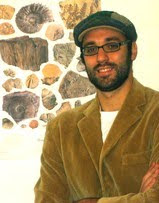“[The laws of the organization of the earth] are in the landscape the foundation of all other thruths – the most necessary, therefore, even if they were not in themselves attractive; but they are as beautiful as they are essential, and every abandonment of them by the artist must end in deformity as it begins in falsehood”
- John Ruskin, Modern Painters, vol. 2, pp. 1-2
Modern Painters is an art treatise written by John Ruskin between 1843 and 1888. Primarily written as a defense of the English painter J.M.W. Turner, it influenced an entire generation of painters. Indeed, as Worthington Whittredge wrote, it “was in every landscape painter's hand” (Wagner, 1988).
Ruskin argued that modern painters were superior to the previous ones (the so-called 'Old Masters'). With Ruskin's words: “there is […] a greater sum of valuable, essential, and impressive truth in the works of two or three of our leading modern landscape painters, than in those of all the old masters put together [...]; while the unimportant and feeble truths of the old masters are choked witih a mass of perpetual defiance of the most authoritative laws of nature".
John Ruskin , (From: Modern Painters, Volume I, page 75).
As witnessed by the initial quotation, Ruskin regarded geology as the foundation of all other 'truths' of painting, namely the truth of tone, colour, space, skies, water and vegetation. An early interest in Earth Sciences explains his 'geological' theory of painting. Ruskin collected many of his geologic observations in his geologic treatise, the Deucalion, but he also simplified geological concepts for artists (Wagner, 1988). This aspect emerges from a letter to Charles Eliot Norton:
“[...] I'm afraid of coming in this way, and go on at once to say that I can't let you have my mountain chapters. I'm going to add them, and publish with notes, not as part of the Deucalion, but as the geology of Modern Painters”.
Ruskin had an important influence on landscape painters, and still nowadays he is considered one of the leading intellectual figures of the Victorian era.
Ruskin founded his own school of art (the Ruskin School of Drawing and Fine Art, known as The Ruskin) under the umbrella of the University of Oxford. Moreover, John Ruskin had proficient contacts with eminent artists of the Victorian era. For instance, he spent the summer of 1853 with the Pre-Raphaelite painter John Everett Milias.
In her brilliant paper 'John Ruskin and Artistical Geology in America', Virginia Wagner (1988) writes: “Landscape painters selectively applied Ruskin's theories and approach in three ways: by painting rock studies, by delineating the geological consistency of the earth, and by interpreting the scenes in Ruskinian terms”.
In fact Ruskinian theories had an important role on the art of Frederic Edwin Church, who was a central figure in the Hudson River School (Wagner, 1988). As mentioned in a previous post, the Hudson School deeply involved geology in its scientific and artistic expression. Among others, Ruskin influenced Frederic Durand, painter and amateur fossil collector, and David Johnson, Arthur F. Tait, Charles Herbert Moore and William Trost Richards (Wagner, 1988).
Ruskin founded his own school of art (the Ruskin School of Drawing and Fine Art, known as The Ruskin) under the umbrella of the University of Oxford. Moreover, John Ruskin had proficient contacts with eminent artists of the Victorian era. For instance, he spent the summer of 1853 with the Pre-Raphaelite painter John Everett Milias.
Ruskin spent one summer at Glen Finglas (Scotland) with the Pre-Raphaelite painter John Everett Milias, who painted a portrait of Ruskin himself (left). On the other hand, Ruskin relized his Study of a Gneiss Rock.
In her brilliant paper 'John Ruskin and Artistical Geology in America', Virginia Wagner (1988) writes: “Landscape painters selectively applied Ruskin's theories and approach in three ways: by painting rock studies, by delineating the geological consistency of the earth, and by interpreting the scenes in Ruskinian terms”.
In fact Ruskinian theories had an important role on the art of Frederic Edwin Church, who was a central figure in the Hudson River School (Wagner, 1988). As mentioned in a previous post, the Hudson School deeply involved geology in its scientific and artistic expression. Among others, Ruskin influenced Frederic Durand, painter and amateur fossil collector, and David Johnson, Arthur F. Tait, Charles Herbert Moore and William Trost Richards (Wagner, 1988).
 |
| Frederic Church, Eruption at Cotopaxi. |
REFERENCES
Wagner, V.L. (1988). John Ruskin and Artistical Geology in America. Wintherthur Portfolio, vol. 23 (2-3)
Wagner, V.L. (1988). John Ruskin and Artistical Geology in America. Wintherthur Portfolio, vol. 23 (2-3)








No comments:
Post a Comment